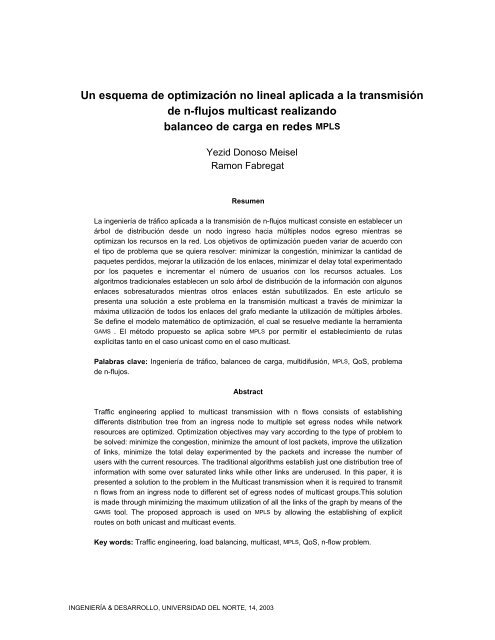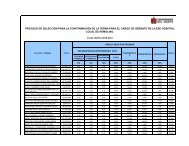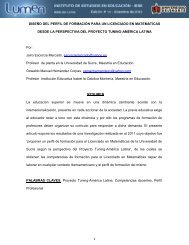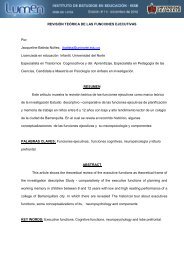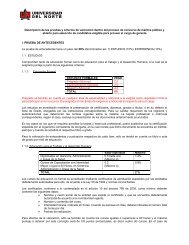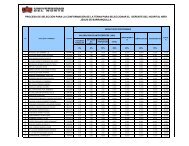IngenierÃa & Desarrollo - Universidad del Norte
IngenierÃa & Desarrollo - Universidad del Norte
IngenierÃa & Desarrollo - Universidad del Norte
You also want an ePaper? Increase the reach of your titles
YUMPU automatically turns print PDFs into web optimized ePapers that Google loves.
Un esquema de optimización no lineal aplicada a la transmisión<br />
de n-flujos multicast realizando<br />
balanceo de carga en redes MPLS<br />
Yezid Donoso Meisel<br />
Ramon Fabregat<br />
Resumen<br />
La ingeniería de tráfico aplicada a la transmisión de n-flujos multicast consiste en establecer un<br />
árbol de distribución desde un nodo ingreso hacia múltiples nodos egreso mientras se<br />
optimizan los recursos en la red. Los objetivos de optimización pueden variar de acuerdo con<br />
el tipo de problema que se quiera resolver: minimizar la congestión, minimizar la cantidad de<br />
paquetes perdidos, mejorar la utilización de los enlaces, minimizar el <strong>del</strong>ay total experimentado<br />
por los paquetes e incrementar el número de usuarios con los recursos actuales. Los<br />
algoritmos tradicionales establecen un solo árbol de distribución de la información con algunos<br />
enlaces sobresaturados mientras otros enlaces están subutilizados. En este artículo se<br />
presenta una solución a este problema en la transmisión multicast a través de minimizar la<br />
máxima utilización de todos los enlaces <strong>del</strong> grafo mediante la utilización de múltiples árboles.<br />
Se define el mo<strong>del</strong>o matemático de optimización, el cual se resuelve mediante la herramienta<br />
GAMS . El método propuesto se aplica sobre MPLS por permitir el establecimiento de rutas<br />
explícitas tanto en el caso unicast como en el caso multicast.<br />
Palabras clave: Ingeniería de tráfico, balanceo de carga, multidifusión, MPLS, QoS, problema<br />
de n-flujos.<br />
Abstract<br />
Traffic engineering applied to multicast transmission with n flows consists of establishing<br />
differents distribution tree from an ingress node to multiple set egress nodes while network<br />
resources are optimized. Optimization objectives may vary according to the type of problem to<br />
be solved: minimize the congestion, minimize the amount of lost packets, improve the utilization<br />
of links, minimize the total <strong>del</strong>ay experimented by the packets and increase the number of<br />
users with the current resources. The traditional algorithms establish just one distribution tree of<br />
information with some over saturated links while other links are underused. In this paper, it is<br />
presented a solution to the problem in the Multicast transmission when it is required to transmit<br />
n flows from an ingress node to different set of egress nodes of multicast groups.This solution<br />
is made through minimizing the maximum utilization of all the links of the graph by means of the<br />
GAMS tool. The proposed approach is used on MPLS by allowing the establishing of explicit<br />
routes on both unicast and multicast events.<br />
Key words: Traffic engineering, load balancing, multicast, MPLS, QoS, n-flow problem.<br />
INGENIERÍA & DESARROLLO, UNIVERSIDAD DEL NORTE, 14, 2003


